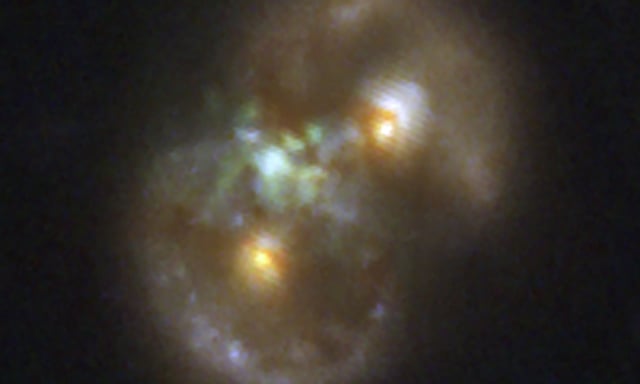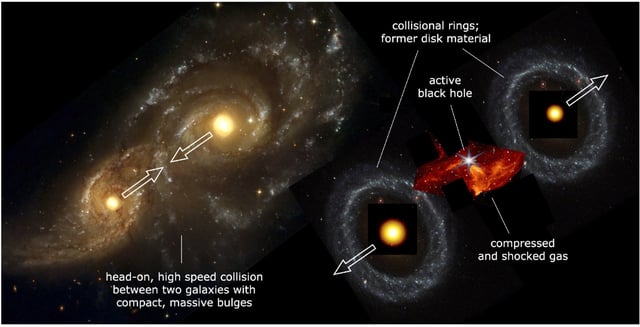Overview
- The Infinity Galaxy, 8.3 billion light-years away, comprises two colliding spiral galaxies whose merged structure resembles the infinity symbol.
- Observations from JWST, W. M. Keck Observatory, the VLA and Chandra reveal a million-solar-mass black hole embedded in a dense cloud of ionized gas between the galaxy nuclei.
- Preliminary velocity measurements align the black hole’s motion with the surrounding gas flows, as expected if it collapsed in situ rather than migrating from a galactic core.
- These results strengthen the heavy-seed hypothesis, proposing that supermassive black holes can form directly from collapsing gas clouds instead of growing solely through stellar-remnant mergers.
- The paper detailing these findings was accepted by The Astrophysical Journal Letters and now awaits deeper spectral analysis and further observations to confirm the direct collapse scenario.

